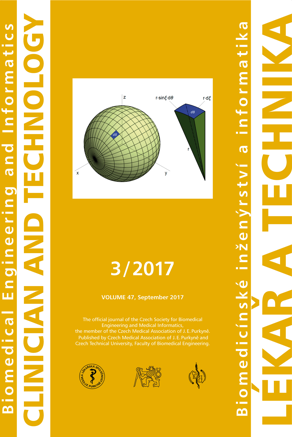DETERMINATION OF THE GEOMETRICAL AND VISCOELASTIC PROPERTIES OF SCAFFOLDS MADE BY ADDITIVE MANUFACTURING USING BIOPLOTTER
Keywords:
Polylactic acid (PLA), Polyhydroxybutyrate (PHB), 3D printing, Bioplotter, extrusion-based printing, polymers, scaffoldsAbstract
Additive Manufacturing (AM) is a name of a group of technologies that build 3D objects by adding layer-upon-layer of material. There are many technologies, including Rapid Prototyping (RP), Direct Digital Manufacturing (DDM), layered manufacturing and additive fabrication. Many types of materials can be used for AM technology. Biodegradable polymers such as polylactic acid (PLA) and polyhydroxybutyrate (PHB), are currently the subject of intensive research in the field of additive manufacturing and regenerative medicine. A number of biodegradable and bioresorbable materials, as well as scaffold designs, have been experimentally and clinically studied in many research facilities around the world. For effective using of bioprinting technologies in tissue and biomedical engineering, the knowledge of material and technological parameters in the process of printing is necessary. In this study the 3D printer Bioplotter EnvisionTEC (the printer with ability to print different materials from hydrogel to plastic materials) was used. Scaffolds for the purpose of the experiment were prepared via extrusion-based bioprinting. Experimental part of this study was focused on defining the influence of printing parameters and technological pre-processing of the material on quality and mechanical and geometrical properties of printed parts. Testing of printed samples showed high influence of pre-processing of material, mainly drying process, on mechanical and geometric quality of samples. Drying of material before printing process makes the material more stable and allows it to maintain defined material properties for a longer time than non-dried material. Time of heating of the material in printing cartridge has also high impact on material behaviour. Test results showed that if the time of heating of the material in the high temperature cartridge exceeds defined time limit, the material starts to degrade and is no more usable.Downloads
Published
Issue
Section
License
Copyright (c) 2017 Alena Balogová, Ondrej Pindroch, Simona Bodnárová, Jozef Feranc, Radovan Hudák, Jozef Živčák

This work is licensed under a Creative Commons Attribution 4.0 International License.
Authors who publish with this journal agree to the following terms:
- Authors retain copyright and grant the journal right of the first publication with the work simultaneously licensed under a Creative Commons Attribution License (https://creativecommons.org/licenses/by/4.0/) that allows others to share the work with an acknowledgment of the work's authorship and initial publication in CTJ.
- Authors are able to enter into separate, additional contractual arrangements for the non-exclusive distribution of the journal’s published version of the work (e.g., post it to an institutional repository or publish it in a book), with an acknowledgment of its initial publication in this journal.
- Authors are permitted and encouraged to post their work online (e.g., in institutional repositories or on their website or ResearchGate) prior to and during the submission process, as it can lead to productive exchanges.
CTJ requires that all of the content of the manuscript has been created by its respective authors or that permission to use a copyrighted material has been obtained by the authors before submitting the manuscript to CTJ. CTJ requires that authors have not used any copyrighted material illegally, as for example a picture from another journal or book, a photo, etc. It is the author’s responsibility to use only materials not violating the copyright law. When in doubt, CTJ may ask the authors to supply the pertinent permission or agreement about the use of a copyrighted material.
The opinions expressed in CTJ articles are those of authors and do not necessarily reflect the views of the publishers or the Czech Society for Biomedical Engineering and Medical Informatics.


